Non-aeronautical Revenue Generation at Dublin Airport
Info: 5819 words (23 pages) Dissertation
Published: 27th Oct 2022
Table of Contents
Introduction
1. Research Question and Objective (Project’s aim and scope)
1.1. Research Objectives
2. Research Process
3. Formulation of Research Design
3.1. Essence of Research Philosophy
3.2. Qualitative vs Quantitative approaches
3.3. Inductive Approach (Theory-Building)
3.4. Deductive Approach (Theory-Testing)
3.5. Abductive approach
4. Questionnaire & Survey Design
4.1. Considerations for Designing a Questionnaire
5. Characteristics of Sound research
Conclusion
Bibliography
Introduction
Nobel Prize winner in Physiology, a Hungarian biochemist Albert Szent-Györgyi, also has the credit of discovering vitamin C said long back, “Research is to see what everybody else has seen, and to think what nobody else has thought.” So, doing research and feeding own talent helps in winning the war against fear and its cousin, depression (Vaillant, 1977). Today, almost every business is facing tough competition.
A study suggests that approximately 95% of new products fail in US and as high as 90% in Europe, and the reason is insufficient market research (Cooper, 1999). Hence, businesses are investing significantly in research areas (Gupta & Govindarajan, 1984) and business researchers collect, compile and analyse the data systematically for providing quality inferences to clients for taking decisions in an optimum manner (Sekaran, 2006).
Basic research is generally not associated with specific problems (Berg, Lune, & Lune, 2004) while applied research directly addresses the problem which is often launched by any kind of business firm or individual facing a specific problem (Hair, 2015), which is applicable in case of our consultancy project with Dublin Airport Authority (DAA).
This paper also presents the research question and the objectives for the study and explains the methodology that will be utilized. It also discusses the research process and explains the methodology by providing the essence of research philosophy and tried to depict the broader terms of research module, known as ‘Research Onion’ (Biffi & Tuissi, 2017).
Further, this study includes information on survey and questionnaire design by throwing some light on population, sampling and its types with appropriate considerations for designing the questionnaires (Saunders, M., Lewis, & P.Tornhill, 2007) regarding DAA project.
For DAA project, the methodology could be mixed methods and the complete study would be applied and cross sectional in nature. Also, a substantial section outlines the sampling methods and response rate as well.
This paper concludes by explaining the characteristic of sound research which are reliability, generalizability, bias and validity. It often looks similar for both qualitative and quantitative research methods but there is significant difference between both (LeCompte & Goetz, 1982).
Research Question and Objective
Research is the methodical analysis into study of materials and their sources, in order to establish certain facts and to reach new conclusions, by critically analysing the subject scientifically. Research is sometimes directly actionable (Saunders, M., Lewis & P.Tornhill, 2007). The results may also suggest ideas for new studies. Research study which includes research area, topic, questions, objectives and performed activities to meet each of objectives of the research (Hair, 2015).
Research questions express the research’s objective in terms of questions which can be addressed by research and research objectives are the goals to be achieved by conducting the research. The objectives may involve examining, monitoring and evaluating the current business operations and the opportunities for entering new market as well (Garet, Porter, Desimone, Birman, & Yoon, 2001). The research objectives cannot be set until researchers and managers have agreed on the common business problem which needs to be addressed (Saunders, M., Lewis & P.Tornhill, 2007). Thus, they discover the key problem through the surveys, series of interviews and through a document called a Research Proposal.
For instance, the research objectives involved in Dublin Airport Authority’s (DAA) project is to generate new ideas for products and services at Dublin Airport by the means of business-to-business (B2B) or business-to-customer (B2C) relationship. This can be derived by using primary data that is collected first hand, generated through qualitative or quantitative research and secondary data that has already been collected for some purpose. This includes research done by other researchers, organisations, governmental agencies, census, marketing research agencies, universities etc (Saunders, M., Lewis & P.Tornhill, 2007).
1.1. Research Question
To develop a business model for generating the revenue for Dublin Airport Authority through non-aeronautical activities.
1.2. Research Objectives
The objective of this study is to find the solutions to address the research question completely by exploring the customer’s experience about Dublin Airport and their spending behaviour on airport during transit time. The key objectives are:
- To find out what consumers might find interesting on airports, how would they like to spend their time on airports during the transit time.
- To find out what offering by DAA, please or do not please the consumers.
- To generate new ideas for products and services at Dublin Airport not only to improve our current offering but also to help define emerging disruptive business model trends that might potentially threaten established products and services (example car parking, car rental, advertising)
- To develop the business model and define the value proposition, market, infrastructure, customer, channels, costs, revenues etc.
- To recommend the launch of new product/service at Dublin Airport.
Research Process
Research is cyclical and is not a one-time act – static, self-contained, and an end in itself. Research creates more problems than it resolves if hasn’t been performed systematically (Hair, 2015). The stages of research process often overlap and it is clearly an over simplification to state that every research project has the same ordered sequence of activities (Zikmund, Babin, Carr, & Griffin, 2013). Nevertheless, business research generally follows a certain pattern which includes:
- Conceptualising the study
- Identification of research question
- formulation of research question
- Reviewing relevant literature
- Refining the research question
- Planning the study
- Developing the study design
- Identification of population/sample
- Identifying the data collection methods
- Access and ethical issues
- Carrying out a pilot study
- Conducting the study
- Recruiting participants
- Collecting data
- Preparing the data
- Data analysis
- Drawing conclusions
- Communicating the result
- Writing up the study
A pictorial representation of a research process is shown below. As far as the application of research process in DAA project is concern, it must be applied orderly. First step is to formulate the research problem or scope followed by in-depth literature review to find out what is already known to the problem. Conducting relevant market analysis in relation to the question after gathering data through primary as well as secondary research followed by recommending the possible alternatives or mandatory actions. The researchers must choose among several alternatives during each stage of the research process, which can be compared to a ‘map’ because there is no single ‘right’ path for all journey.
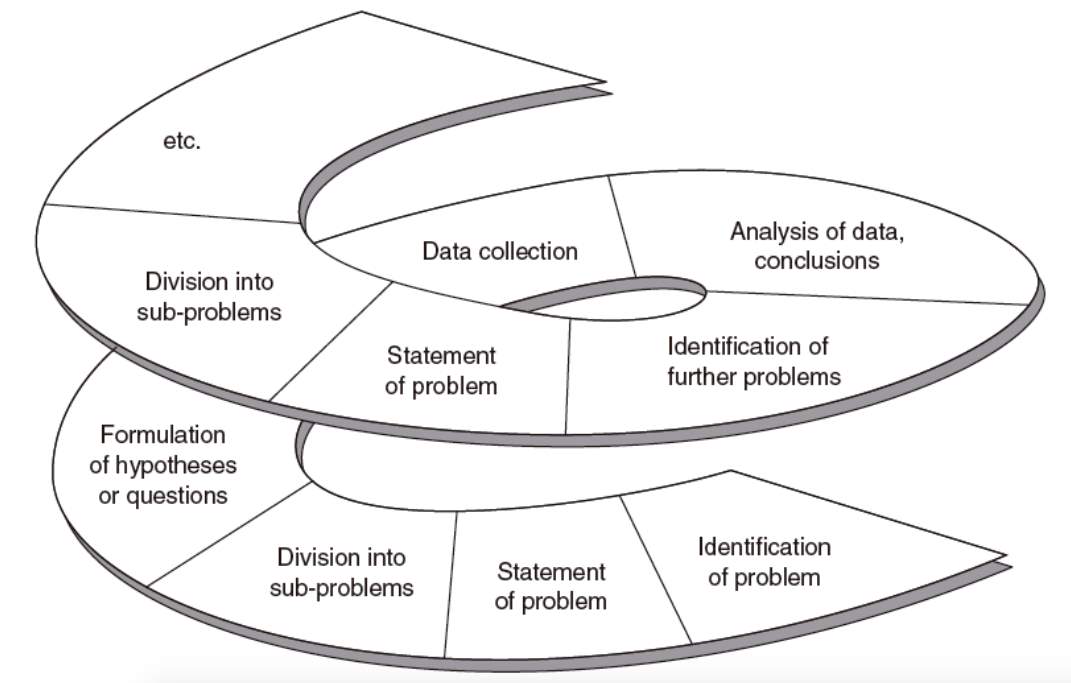
Figure 1: Research Process
3. Formulation of Research Design
Research design is a broader plan of how researchers will answer their research question and this question contain clear objectives which are derived from research question, specify the sources from collected data and its analysis followed by the inevitably encountered constraints (e.g. time, money, location and access to data) (Creswell & Clark, 2007). Crucially, it should demonstrate that researchers have considered multiple elements for research design. The primary methodological choice is whether a researcher follows a quantitative, qualitative or mixed method to achieve coherence in research design (Mertens, 2014). The nature of research project could be either exploratory, descriptive, explanatory, evaluative or a combination of these. Also, the use of multiple strategy in research design ensures better coherence in research project (Creswell, 2013).
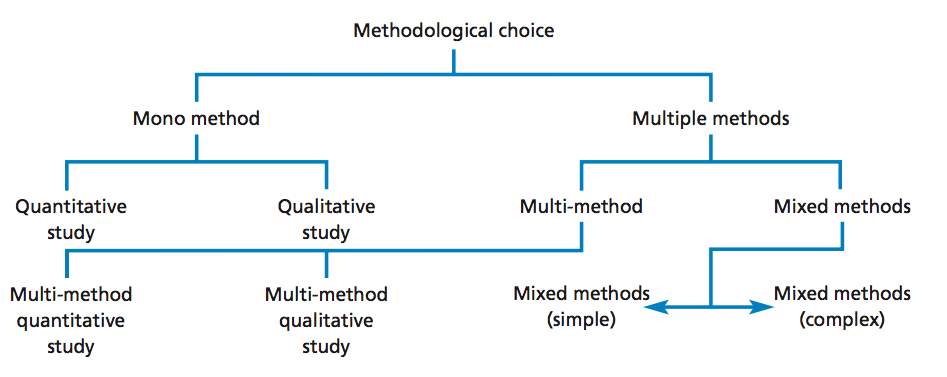
Figure-3: Methodological Choice (Source: Saunders et al, 2009)
3.1. Essence of Research Philosophy
Research philosophy deals with the source, nature and development of knowledge (Cilliers & Spurrett, 1999). Collection of secondary and primary data and engagement in data analysis is required to answer the research question and this answer marks the creation of new knowledge (Saunders, M., Lewis, P.Tornhill, 2007). Addressing research philosophy in dissertation or project involves being aware and formulating one’s beliefs and assumptions. The identification of the research philosophy is positioned at the outer layer of the ‘Research Onion’ (Bam, 1992). The philosophy of a study reflects the author’s important assumptions which serve as a base for the research strategy. Generally, research philosophy has many branches related to a wide range of disciplines but in the scope of business studies, there are four main research philosophies: Pragmatism, Positivism, Realism and Interpretivism (Zikmund et al., 2013).
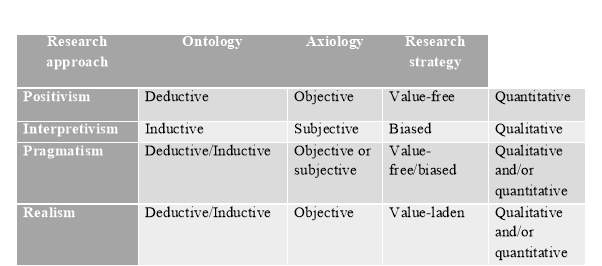
To study about the human behaviour pattern through either qualitative or quantitative, phenomenological philosophy is used. Phenomenology refers to how human beings interpret their environment (Saunders, M., Lewis, P.Tornhill, 2007). This methodology is interested in the subjective experience of the study participant (Englander, 2012) and the description of this perception (Lee, Saunders, & Goulding, 2005). According to Fischer (2009) phenomenology as a research philosophy allows in-depth understanding of participant’s immediate experiences (Lee et al., 2005) while minimizing the effect of researcher’s prejudice. The outcome of a phenomenological study should not make any psychological interpretation of the participants’ experience but should simply be a straightforward depiction of it (Merleau-Ponty & Smith, 1962). It focuses on the conscious experience and ignores the role of the subconscious to make the common denominators of participant’s experiences appear (Lee et al., 2005).
3.2. Qualitative vs Quantitative approaches
According to Burrell & Morgan (1979) methodology refers to the different strategies that can be utilised by researchers to address a research question. (Saunders, M., Lewis, P.Tornhill, 2007) highlight that one of the first methodological choices relates to whether quantitative, qualitative or mixed methods are employed. A common heuristic used to distinguish these methods is that, qualitative relates to non-numeric data (words, video, etc.). Conversely, quantitative refers to numeric data (Saunders & Lewis, 2012). Commonly business and management research designs employ both quantitative and qualitative components.
While a questionnaires technique is synonymous with the quantitative technique, many questionnaires contain open ended questions. In this way it is problematic to see quantitative and qualitative research as binary options, but rather as a continuum (Saunders & Lewis, 2012). According to Creswell & Clark (2007) varying priority or weight can be delegated to quantitative or qualitative within the purview of mixed methods research. In simple terms one method can play a supporting, dominant or equal role contingent on the research question. By extension the researcher and those who commission or supervise the student may also guide the prioritisation of one method (Saunders & Lewis, 2012). The term embedded mixed methods research describes a situation in which one method supports the other (Creswell & Clark, 2007).
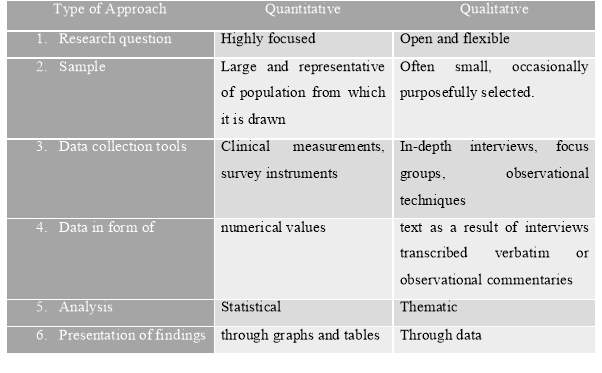
3.3. Inductive Approach (Theory-Building)
Inductive approach, also referred as ‘bottom-up’ approach (Bogdan & Biklen, 1997), starts with the observations and theories are proposed towards the end of the research process because of observations. Inductive research involves the search for pattern from observation and the development of explanations – theories – for those patterns through series of hypotheses. Inductive reasoning is based on learning from experience i.e. patterns, resemblances and regularities. No theories or hypotheses would apply in inductive studies at the beginning of the research and the researcher is free in terms of altering the direction for the study after the research process had commenced. This approach aims to generate meanings from the data set collected in order to identify patterns and relationships to build a theory; however, it doesn’t prevent researchers from using existing theory to formulate the research question to be explored (Saunders, M., Lewis, P.Tornhill, 2007).
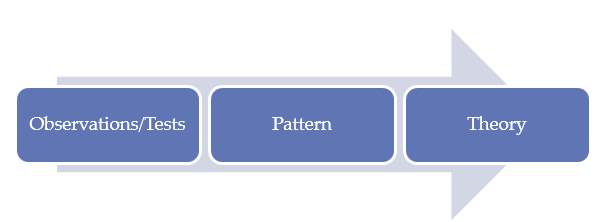
3.4. Deductive Approach (Theory-Testing)
A deductive approach is concerned with developing a hypothesis based on existing theory, and then designing a research strategy to test the hypothesis. It has been noted that the deductive approach follows the path of logic most closely. The reasoning starts with a theory and leads to a new hypothesis. This hypothesis is put to the test by confronting it with observations that either lead to a confirmation or a rejection of the hypothesis (Saunders, M., Lewis, P.Tornhill, 2007).


Figure-4: Comparison between Inductive and Deductive Approach
3.5. Abductive approach
Abductive reasoning, as a third alternative, also referred to as abductive approach is set to address weaknesses associated with deductive and inductive approaches by adopting pragmatist perspective (Morgan, 2007). Specifically, deductive reasoning is criticized for the lack of clarity in terms of how to select theory to be tested via formulating hypotheses (Griggs & Newstead, 1982). On the other hand, inductive reasoning is criticized because it lacks in terms of having experiential data for theory-building (Lienert & Huber, 1966). In abductive approach, the research process starts with surprising elements. While explaining it, numerical, cognitive reasoning or both can be utilised by the researcher to make logical inferences and construct theories similar to inductive and deductive approaches. Though the popularity of this approach is increasing these days in business world, but it is advisable to follow the former two basic and traditional approaches to avoid the challenges faced during applying it (Zikmund et al., 2013).
4. Questionnaire & Survey Design
Population refers to an entire set or elements with common features, while the target population, a subset of entire population, are the set of element larger than or different from the sample population, on which researchers prefer to generalise their findings (Hannan & Freeman, 1977). For analysing the findings, a subgroup of target population is selected, known as Sample. While sampling, a statistical technique with specific principles in which sample is selected for answering the questions asked in survey, is devised to analyse large data scientifically (Patton, 2005). In other words, because of the large size of target population, there is no option but to study multiple cases of elements within the population for managing it well, for concluding the findings accurately, for saving the cost of research by accelerating the collection speed of primary data (Brown, 2006).
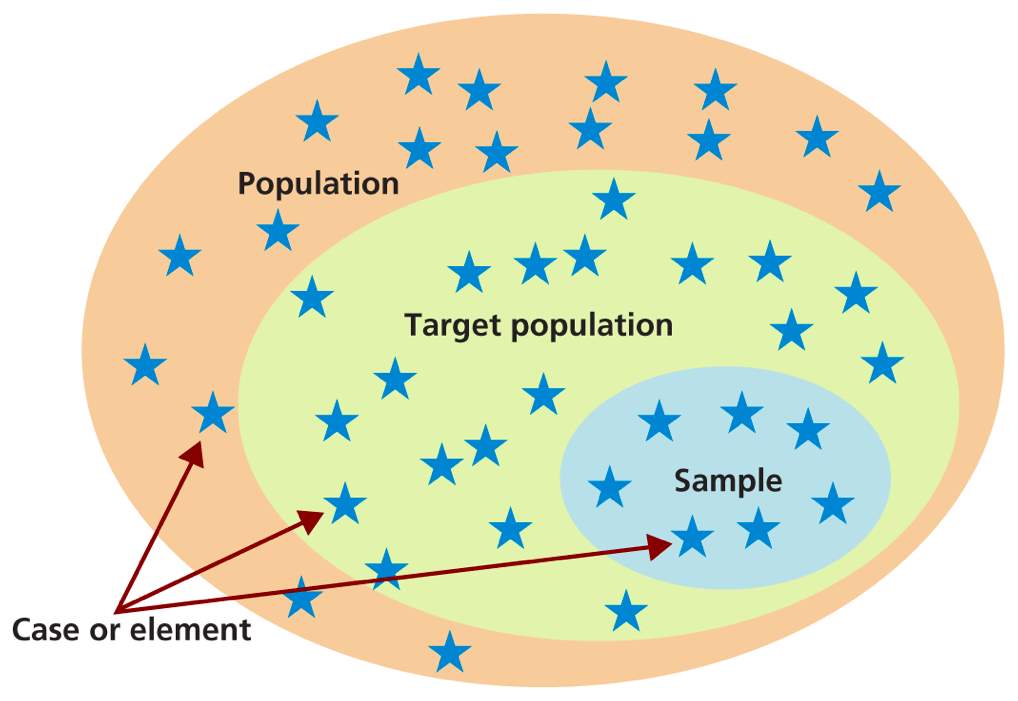
Figure. Population, sample and individual cases: Saunders et al., 2012
Sampling methods are broadly divided into two categories: probability and non-probability. Probability sampling method provides a known chance to participate every member of the population in the study. It includes simple, stratified systematic, multistage, and cluster sampling methods. While the selection of group member in non-probability sampling method is being done on the non-random manner. Hence, each population member doesn’t get a chance to participate in the study. It includes quota, purposive, snowball and convenience sampling methods.
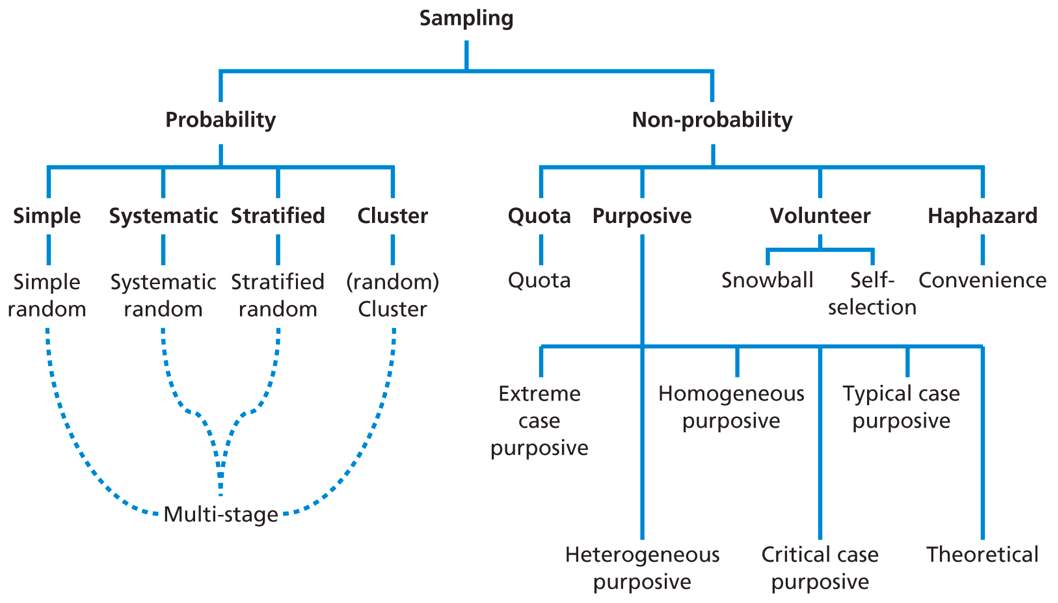
Questionnaires, a predefined string of questions, used to collect data from individuals and Survey research is a commonly used method of collecting information about a population of interest (Saunders, M., Lewis, P.Tornhill, 2007). Closed-ended questions and open-ended questions are the most common type of survey questions. In closed-ended questions, a list of predetermined questionnaires is given to respondents to choose their answers (Zikmund et al., 2013). The responses are designed to avoid any kind of overlapping in respondent’s answers by using Likert scale which includes ‘Do you strongly agree, somewhat agree, neither agree nor disagree, somewhat disagree, or strongly disagree’ kind of responses (Mezuk & Rebok, 2008).
These are preferred usually in survey research as their occurring frequency can be counted easily (Wolcott, 1994). While in open-ended questions, respondents are asked to write answers in their own words which are usually categorised into list of smaller responses for analysing statistically (Zaller & Feldman, 1992). Response rates represent a salient concern for researchers who distribute questionnaires (Saunders & Lewis, 2012). Response rates are intuitively defined by Díaz de Rada (2005) who describes them as the number of finished questionnaires that are returned divided by the number of questionnaires which were distributed. Two conflicting interpretations of response rates have emerged within the literature. According to Edwards et al. (2002) low response rates can impact the reliability of any research. Alternatively, others have downplayed the significance, arguing that it does not necessarily increase reliability and the precision of results (Dillman, 1991). Nevertheless, it is favourable to achieve a high response rate to lessen the risk of non-response bias and to have the best chance of having a representative sample (Groves & Peytcheva, 2008).
4.1. Considerations for Designing a Questionnaire
It is vital to acknowledge the logical order of question in which they are presented (Fernández-Ballart et al., 2010). Personal, routine or sensitive data, for instance, income, religion, age, gender, marital status, sexual activity, or drug usage should be at the end of the questionnaire to avoid any kind of hesitation or embarrassment which ultimately helps in building trust. Also, the double-barrelled question i.e. two questions in one, and any emotional or biased words should never be used in survey (Saunders & Lewis, 2012). The questionnaire for DAA project with a brief title for enhancing the reliability (Johnson & Clark, 2006), will be designed by utilizing the broad set of information after examining the existing academic, business and industry literatures.
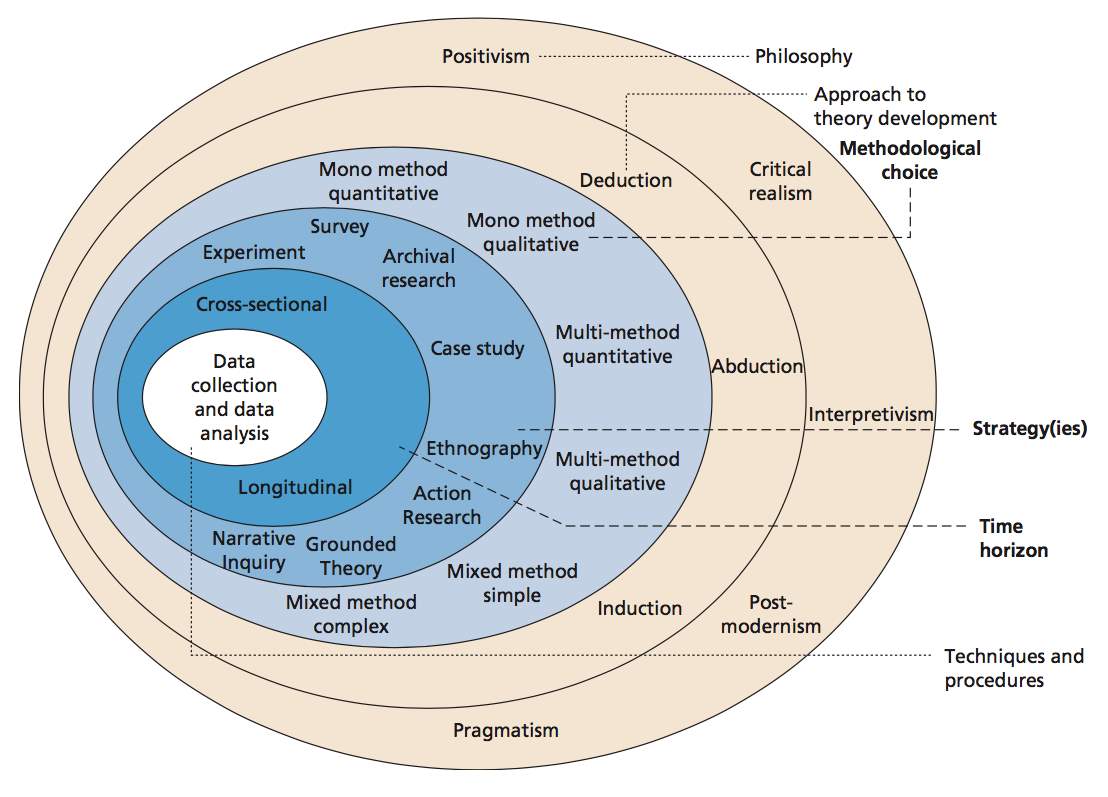
Figure 2: The Research Onion
5. Characteristics of sound research
Validity, a research is valid when it is this true in a different setting. This will inevitably involve a degree of subjective judgement, but by managing the various threats to the validity of our research we can improve our chances of producing valid work (Fraenkel, Wallen, & Hyun, 1993). A study is internally valid if it describes the true state of affairs within its own setting (Nahis, 2003). Generalisability, a research finding may be entirely valid in one setting but not in another (Guba & Lincoln, 1994). Generalisability describes the extent to which research findings can be applied to settings other than that in which they were originally tested. A study is externally valid if it describes the true state of affairs outside its own setting (Nahis, 2003). Both validity and generalisability are important, but a study that is valid but not generalizable is at least useful for informing practice in the setting in which it was carried out. Whereas there is no point trying to generalise the findings of an invalid study (Saunders, M., Lewis, P.Tornhill, 2007).
There may be mainly three reasons for invalidity of findings. First, Chance, the measurements we make while doing research are nearly always subject to random variation. The best way to avoid error due to random variation is to ensuring the sample size is adequate. Second, Bias, chance is caused by random variation, bias is caused by systematic variation. A systematic error in the way we select our subjects measure our outcomes, or analyse our data will lead to results that are inaccurate. There are many types of bias that may affect a study.
Understanding how bias occurs is more important than remembering different types of bias. The sample will avoid a bias if it is closest possible representative of the population, and there is a consistent accuracy in measurement or method (Saunders, M., Lewis, P.Tornhill, 2007). Third, Confounding is like bias and is often confused. Bias includes error during measuring error, however, confounding includes error in interpretation of what may be an accurate measurement (McNutt, Wu, Xue, & Hafner, 2003). A classic example of confounding is to interpret the finding that people who carry matches are more likely to develop lung cancer as evidence of an association between carrying matches and lung cancer. Smoking is the confounding factor in this relationship- smokers are more likely to carry matches and they are also more likely to develop lung cancer. Cofounding must be controlled through the design and analytical stages.
For the design stage, it is prescribed that randomization, restriction, and matching of the dependent variables (Aschengrau & Seage, 2009). This means that all study participants or samples should be randomly selected to reduce the possibility of chance. For example; age, a known confounder, should be restricted to a narrow width such as 20-25 years old, 26-30 year olds, and so on. Age restriction ensures equal chances of obtaining similar scores. Similarly, gender can also be adjusted for by matching females to females and males to males. Using the same principles, as in the design stage, confounding can be controlled for at the analytical stage through standardization (age, gender, and race), stratified analysis, and multivariate analysis (Aschengrau & Seage, 2013).
Conclusion
Doing research is not that simple. It demands rigorous effort and most of the researches tends to be futile, because in most of the cases, minimal attention is being paid to vital dimensions related with research, that of research methodology (Sekaran, 2006). Quite frequently these days researches are going on, both in academic and non-academic areas contains endless word-spinning which is only producing quantity (Ozga, 2008). Once a great scientist Albert Einstein said, “If we knew what it was we were doing, it wouldn’t be called research, would it?” and certainly the answer would be ‘no’. Therefore, the need is stick with basics and to pay high attention in designing and adhering the methodology appropriately throughout the research for improving the quality (Saunders, M., Lewis, P.Tornhill, 2007).
The research is all about doing systematic analysis by acquiring new knowledge. Also, it is about correlating, correcting and integrating the findings with previous knowledge (Kothari, 2004). This paper has discussed the finding on research process, methodology and the concept of theory testing and building by addressing the project’s aim and scope. Further, tried to explain overall theatrical part of research methodology and philosophy with respect to the DAA project.
Further, investigated the survey and questionnaire designing process and boiled down to specific considerations which is required for DAA project regarding questionnaire design. This paper concludes with the evaluation of sound research’s characteristic and the possible threats associated if the research is not being done systematically. Throughout the whole research, data collection and its analysis plays a vital role to meet research objectives (Zikmund et al., 2013). The more quantity the data will be, the more accurate the analysis will be which ultimately gives better results overall (Forster & Sober, 1994). Once the Nobel Prize winner in Economics, Ronald Coase, said, “Torture the data, and it will confess to anything.”
Bibliography
Aschengrau, A., & Seage, G. R. (2013). Essentials of epidemiology in public health. Jones & Bartlett Publishers. Bam, K. (1992). Research methods for business and management.
Berg, B. L., Lune, H., & Lune, H. (2004). Qualitative research methods for the social sciences (Vol. 5). Pearson Boston, MA. Biffi, C. A., & Tuissi, A. (2017). Stato dell’arte sulle tecniche di produzione additiva per metalli. Metallurgia Italiana (Vol. 109). https://doi.org/10.1017/CBO9781107415324.004
Bogdan, R., & Biklen, S. K. (1997). Qualitative research for education. Allyn & Bacon Boston.
Burrell, G., & Morgan, G. (1979). Social paradigms and organizational analysis. Aldershop, Gower.
Cilliers, P., & Spurrett, D. (1999). Complexity and post-modernism: Understanding complex systems. South African Journal of Philosophy, 18(2), 258–274.
Cooper, R. G. (1999). Product Innovation Best Practices Series From Experience : The Invisible Success Factors In Product Innovation From Experience : The Invisible Success Factors in Product Innovation. Journal of Product Innovation Management, 16(2), 115–133. Creswell, J. W. (2013). Research design: Qualitative, quantitative, and mixed methods approaches. Sage publications.
Creswell, J. W., & Clark, V. L. P. (2007). Designing and conducting mixed methods research.
Díaz de Rada, V. (2005). Measure and control of non-response in a mail survey. European Journal of Marketing, 39(1/2), 16–32.
Dillman, D. A. (1991). The design and administration of mail surveys. Annual Review of Sociology, 17(1), 225–249.
Edwards, P., Roberts, I., Clarke, M., DiGuiseppi, C., Pratap, S., Wentz, R., & Kwan, I. (2002). Increasing response rates to postal questionnaires: systematic review. Bmj, 324(7347), 1183.
Englander, M. (2012). The interview: Data collection in descriptive phenomenological human scientific research. Journal of Phenomenological Psychology, 43(1), 13–35.
Fernández-Ballart, J. D., Piñol, J. L., Zazpe, I., Corella, D., Carrasco, P., Toledo, E., … Martín-Moreno, J. M. (2010). Relative validity of a semi-quantitative food-frequency questionnaire in an elderly Mediterranean population of Spain. British Journal of Nutrition, 103(12), 1808–1816.
Fischer, C. T. (2009). Bracketing in qualitative research: Conceptual and practical matters. Psychotherapy Research, 19(4–5), 583–590.
Forster, M., & Sober, E. (1994). How to tell when simpler, more unified, or less ad hoc theories will provide more accurate predictions. The British Journal for the Philosophy of Science, 45(1), 1–35.
Fraenkel, J. R., Wallen, N. E., & Hyun, H. H. (1993). How to design and evaluate research in education (Vol. 7). McGraw-Hill New York.
Garet, M. S., Porter, A. C., Desimone, L., Birman, B. F., & Yoon, K. S. (2001). What makes professional development effective? Results from a national sample of teachers. American Educational Research Journal, 38(4), 915–945.
Griggs, R. A., & Newstead, S. E. (1982). The role of problem structure in a deductive reasoning task. Journal of Experimental Psychology: Learning, Memory, and Cognition, 8(4), 297.
Groves, R. M., & Peytcheva, E. (2008). The impact of nonresponse rates on nonresponse bias a meta-analysis. Public Opinion Quarterly, 72(2), 167–189.
Guba, E. G., & Lincoln, Y. S. (1994). Competing paradigms in qualitative research. Handbook of Qualitative Research, 2(163–194), 105.
Gupta, A. K., & Govindarajan, V. (1984). Business unit strategy, managerial characteristics, and business unit effectiveness at strategy implementation. Academy of Management Journal, 27(1), 25–41.
Hair, J. F. (2015). Essentials of business research methods. ME Sharpe. Hannan, M. T., & Freeman, J. (1977). The population ecology of organizations. American Journal of Sociology, 82(5), 929–964.
Johnson, P., & Clark, M. (2006). Business and management research methodologies. Sage.
Kothari, C. R. (2004). Research methodology: Methods and techniques. New Age International.
LeCompte, M. D., & Goetz, J. P. (1982). Problems of reliability and validity in ethnographic research. Review of Educational Research, 52(1), 31–60.
Lee, N., Saunders, J., & Goulding, C. (2005). Grounded theory, ethnography and phenomenology: A comparative analysis of three qualitative strategies for marketing research. European Journal of Marketing, 39(3/4), 294–308.
Lienert, G. A., & Huber, H. P. (1966). Differential effects of coffee on speed and power tests. The Journal of Psychology, 63(2), 269–274.
McNutt, L.-A., Wu, C., Xue, X., & Hafner, J. P. (2003). Estimating the relative risk in cohort studies and clinical trials of common outcomes. American Journal of Epidemiology, 157(10), 940–943.
Merleau-Ponty, M., & Smith, C. (1962). Phénoménologie de la Perception. Phenomenology of Perception... Translated... by Colin Smith. London; Humanities Press: New York.
Mertens, D. M. (2014). Research and evaluation in education and psychology: Integrating diversity with quantitative, qualitative, and mixed methods. Sage publications.
Mezuk, B., & Rebok, G. W. (2008). Social integration and social support among older adults following driving cessation. The Journals of Gerontology Series B: Psychological Sciences and Social Sciences, 63(5), S298–S303.
Morgan, D. L. (2007). Paradigms lost and pragmatism regained methodological implications of combining qualitative and quantitative methods. Journal of Mixed Methods Research, 1(1), 48–76.
Nahis, G. (2003). Understanding reliability and validity in qualitative research. The Qualitative Report, 8(4), 4–9. https://doi.org/10.3367/UFNr.0180.201012c.1305
Ozga, J. (2008). Governing Knowledge: research steering and research quality. European Educational Research Journal, 7(3), 261–272.
Patton, M. Q. (2005). Qualitative research. Wiley Online Library. Saunders, M., Lewis,
P.Tornhill, A. (2007). Research Methods for Business Students. In Pearson Education Limited 2 (p. 652). https://doi.org/10.1007/s13398-014-0173-7.2
Saunders, M. N. K., & Lewis, P. (2012). Doing research in business & management: An essential guide to planning your project. Pearson.
Sekaran, U. (2006). Research methods for business: A skill building approach. John Wiley & Sons. Vaillant, G. E. (1977). Adaptation to life. Harvard University Press.
Wolcott, H. F. (1994). Transforming qualitative data: Description, analysis, and interpretation. Sage.
Zaller, J., & Feldman, S. (1992). A simple theory of the survey response: Answering questions versus revealing preferences. American Journal of Political Science, 579–616.
Zikmund, W. G., Babin, B. J., Carr, J. C., & Griffin, M. (2013). Business research methods. Cengage Learning.
Cite This Work
To export a reference to this article please select a referencing stye below:
Related Services
View allRelated Content
All TagsContent relating to: "Aviation"
Aviation regards any activity involved in the aircraft industry or mechanical flight including flying and the design, manufacture, and maintenance of aircraft. The term “aircraft” includes such vehicles as aeroplanes, helicopters, and lighter than air craft such as hot air balloons and airships.
Related Articles
DMCA / Removal Request
If you are the original writer of this dissertation and no longer wish to have your work published on the UKDiss.com website then please:




